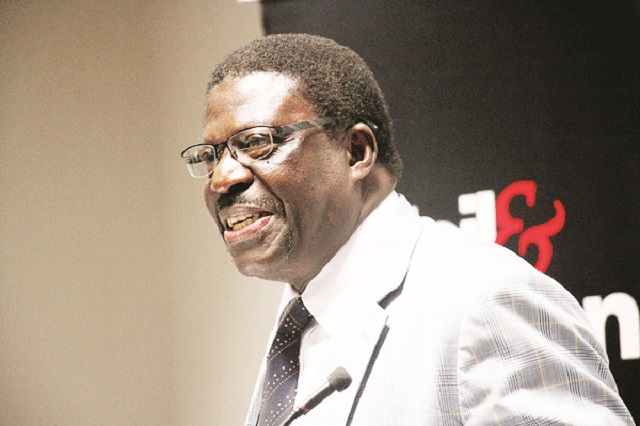
The Sunday News

Oliver Kazunga, Senior Business Reporter
THE Government has started the computerisation of the country’s register of mining rights and titles to unlock value in the sector as well as curb double allocation of mining claims, a Cabinet Minister said.
Under the previous system, Zimbabwe’s mining industry has been characterised by disputes emanating from lack of survey information.
In a keynote address presented on his behalf by Industry and Commerce Minister, Dr Mike Bimha, at the three-day Mine Entra Expo in Bulawayo last week, Mines and Mining Development Minister Walter Chidhakwa said:
“In order to unlock value, avoid double allocation of titles as well as enhancing of security of tenure, Government has embarked of computerisation of mining titles in this regard my ministry is already working on this computerised mining system.”
As the cadastre system was being implemented, Minister Chidhakwa called on the mining title holders (companies or individuals) to co-operate with Government in updating information at their specific mining sites. The register or cadastre is expected to avoid double allocation through recording geographical locations, ownership and time validity of mining rights and show compliance with all the requirements.
It is hoped that a mineral register would be the central database for storage of information on applications and licences. In addition, it is envisaged that procedures would be streamlined and thus reducing processing time for issuance of mining title and other services in line with best practice across the globe.
“Furthermore, it (cadastre system) will be used in enforcing the ‘Use-it-or-lose it’ policy in the draft Mines and Minerals Act currently under consideration by Parliament,” said Minister Chidhakwa.
At present, mining licence demarcations are marked on the ground by metal stakes, concrete beacons or similar fixed points that were surveyed using conventional methods such as a theodolite or archaic methods involving tape and chains.
In line with the new mineral cadastre system, a mining title would be issued in the form of a mining lease, where the title extends over four or more contiguous blocks. Minister Chidhakwa said his ministry remains committed to the full implementation of policies aimed at attaining sustainable development of the mining industry.
“In the context, we welcome both domestic and foreign investors into the sector. There is no doubt that we need each other as Government, industry and community in order to create mutual benefit for the country’s God-given resources on a win-win basis,” he said.
He noted that it was imperative for the country to foster business linkages in the mining industry across the whole value chain system to derive maximum benefits from minerals. The Government this year projects mineral value to grow to $3 billion up from $2 billion in 2016.
Zimbabwe mining sector is largely driven by minerals such as gold, platinum and diamonds. Speaking at the same occasion, Chamber of Mines president, Mr Batirai Manhando, said since 2009, the local mining industry has experienced phenomenal growth.
“Since dollarisation, Zimbabwe’s mining sector has recorded sterling performance, with the sector having recorded by an average of 12 percent between 2009 and 2016. The sector is expected to grow by six percent in 2017. Key minerals driving mining performance include gold, platinum group of metals, diamonds, chrome, coal and nickel,” he said.
Mr Manhando said Zimbabwe’s mining industry contribution to the economy compares favourably with both international and regional experiences, with the sector presently contributing 10 percent of nominal GROSS Domestic Product, 55 percent of total exports, nine-13 percent of fiscal revenue, and more than 45 000 formal jobs as well as over 50 percent of total foreign direct investment.
Except for gold and chrome ore which recorded increases in volume, all other minerals recorded declines in the first five months to May 2017, compared to the same period in 2016, he said.



